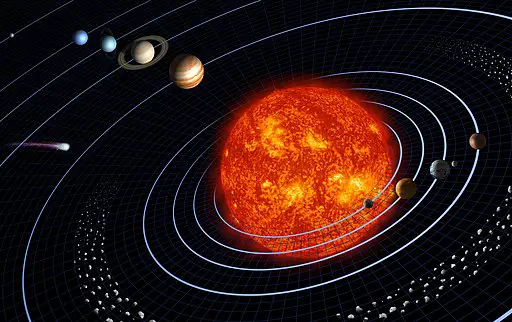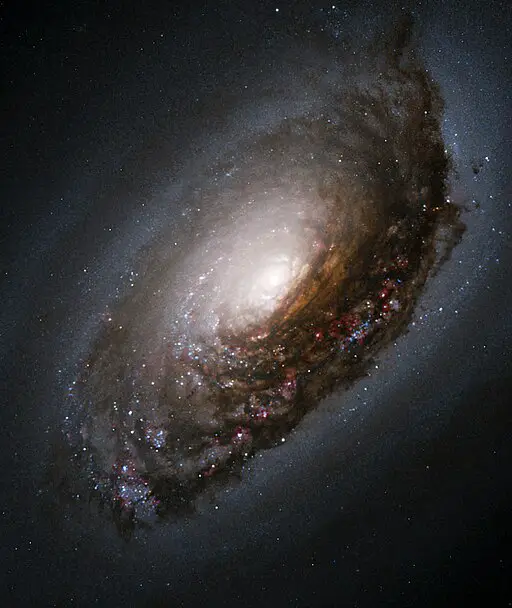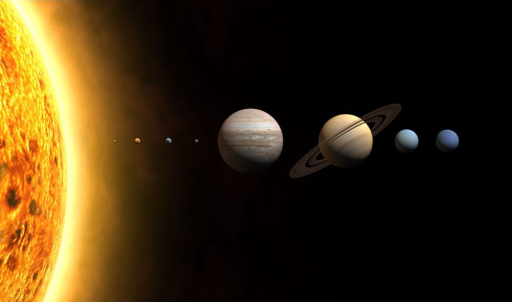A solar system is a single star (like our Sun) with orbiting planets and objects, while a galaxy is a vast collection of stars, planets, and other celestial matter.
TL;DR Solar system Vs. Galaxy
A solar system is a smaller entity that consists of a star at the center, with planets and other celestial bodies orbiting around it. Our very own Solar System is just one example among many.
A galaxy is much larger in scale and encompasses numerous stars, planetary systems, gas clouds, and other cosmic objects. Galaxies come in various shapes and sizes, ranging from spiral to elliptical to irregular.
What is a Solar System?

A solar system is a gravitationally bound system comprising a central star, like our Sun, and various celestial objects that orbit around it. At the center of the solar system is the Sun, a massive, luminous ball of hot gases that provides the gravitational force holding everything together. Orbiting the Sun are planets, moons, asteroids, comets, and other smaller objects. These celestial bodies are all part of the same solar system because they share a common gravitational relationship with the Sun.
The arrangement and characteristics of a solar system can vary greatly from one to another. Our solar system, for instance, has eight recognized planets, including Earth, and a variety of moons, asteroids, and comets. Understanding these systems helps scientists unravel the mysteries of the cosmos and provides insights into the formation and evolution of celestial objects.
What is a Galaxy?

A galaxy is a vast, gravitationally bound system of stars, star clusters, planetary systems, interstellar gas, dust, and dark matter. These components are held together by gravity and collectively form a cohesive structure in space. Galaxies come in various shapes and sizes, with the most common types being spiral galaxies, elliptical galaxies, and irregular galaxies.
Our Milky Way is an example of a spiral galaxy, characterized by its spiral arms radiating out from a central core. Galaxies can contain billions to trillions of stars, and they serve as the building blocks of the universe. They are fundamental to our understanding of cosmology, as they house most of the visible matter in the universe and play a critical role in the evolution and distribution of celestial objects and cosmic structures. Studying galaxies provides insights into the history and dynamics of the cosmos.
Solar system Vs. Galaxy – Key differences
Solar system Vs. Galaxy – Size and Scale Comparison
Solar System
- Size: Solar systems are relatively small in scale. They typically extend for a few light-hours to a few light-days, with the central star (e.g., the Sun) at the center and planets, moons, asteroids, and comets orbiting around it.
- Scale: The scale of a solar system is planetary or stellar, meaning it involves the interactions between a star and its immediate planetary or celestial objects. The distances and sizes within a solar system are much smaller compared to a galaxy.
Galaxy
- Size: Galaxies are vast and expansive in size. They can extend for thousands to hundreds of thousands of light-years in diameter. A galaxy contains billions to trillions of stars, star clusters, interstellar gas, dust, and dark matter.
- Scale: The scale of a galaxy is galactic or cosmological. It encompasses the interactions and movements of countless stars and celestial objects within the galaxy. Galaxies themselves are part of a larger cosmic structure.
The key distinction lies in the immense size and cosmic scale of galaxies, which contain billions of solar systems like our own, each with its central star and planetary system. A solar system, on the other hand, is much smaller and represents the interactions around a single star.
Image Credits
Featured Image By – Planets2013.svg: WPDerivative work: Radoslav Ivan, CC BY-SA 4.0 , via Wikimedia Commons
Image 1 By – NASA/JPL, Public domain, via Wikimedia Commons
Image 2 By – NASA and The Hubble Heritage Team (AURA/STScI), Public domain, via Wikimedia Commons









